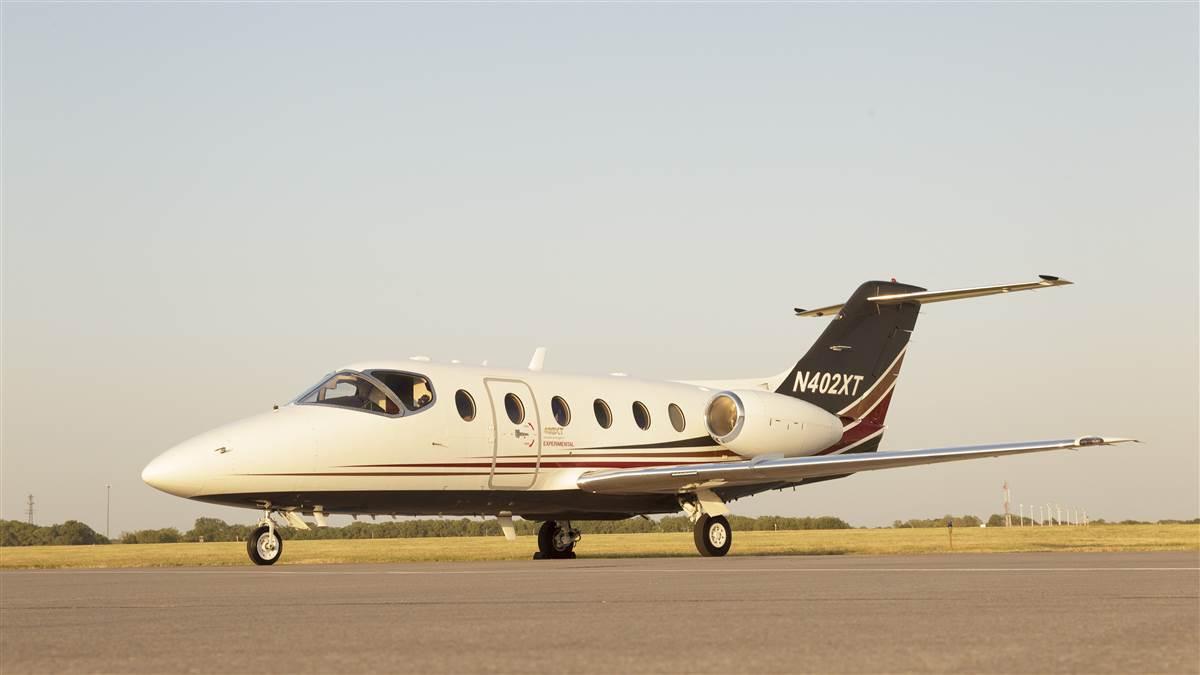Quick Look: Nextant 400XTi
Modernized Beechjet/Hawker 400

Cleveland-based Nextant Aerospace recognized the many strengths of the design—perhaps most important, its lack of an airframe life limit. Nextant imagined the Beechjet with new, more efficient engines; modern avionics; and an interior built with today’s connectivity in mind. The ambitious plan created the Nextant 400XT. With its introduction in 2011, you could have a like-new jet for half the cost of a new one.
Two versions have been made through the airplane’s life cycle: the XT and XTi. The XTi features avionics enhancements, cabin upgrades, LED lighting in and out, and an improved bleed-air system.
Nextant’s Beechjet rebuild is more than just a new panel, paint, interior, and engines. These airplanes were torn down, inspected throughout, had life-limited parts replaced, and had upgrades performed on the traditional Beechjet weak spots, such as the engine mounts. The redesigned mounts eliminate an airworthiness directive that mandates recurring inspections. Nextant even replaced 80 to 90 percent of the airplane’s wiring. Surrounding the new engine mounts are new engine pylon fairings that reduce drag. All told, Nextant put 9,000 labor hours in transforming a Beechjet into a Nextant 400.
Key to the modernization is the use of Williams FJ44 engines. They create slightly more thrust than the old Pratt & Whitney JT15s and do so on 32 percent less fuel. Furthermore, the FJ44s are 240 pounds lighter and carry a time between overhauls that’s 1,400 hours longer than the JT15’s. Less fuel burn and lighter engines mean more useful load and longer range. Nextant claims a 1,925-nautical-mile maximum range, about 300 nm more than stock Beechjets.
Long-range cruise is Mach 0.70/400 KTAS while high-speed trips are flown at Mach 0.76 to Mach 0.78. Nextant claims a 460-knot maximum cruise speed. First hour fuel burn is 1,200 pounds, second hour 900 pounds, and third hour 800 pounds. Maximum range can be attained with four passengers, according to Nextant.
Up in the cockpit, Nextant ripped out everything the airplane arrived with. It was replaced with a four-screen Rockwell Collins Pro Line 21 system with dual flight management systems, bringing this “Beechjet” in line with brand-new jets that emerged from the factories in those days. And like those new jets, the 400XTi’s engines are controlled by full-authority digital engine control, bringing simplicity, safety, and more efficient operation.
Building on the large cabin and flat floor that Beechjets are known for, Nextant completely redesigned the interior and offered three different setups. In a 2015 flight test, AOPA Pilot flew a 400XTi with a roomy club setup and a three-place side divan up front. It was also equipped with Wi-Fi and an entertainment system. In all interior layouts, a fully enclosed lav sits at the rear of the cabin. In the rebuild process, Nextant gave a lot of attention to soundproofing, leading to a claimed 12-decibel decrease in cabin noise levels.
One performance aspect that doesn’t change much compared to the original Beechjet is runway performance. Beechjets, and the Mitsubishi Diamond on which they’re based, are not known for short-field prowess. These airplanes utilize a small, swept wing designed for speed while carrying a large cabin. In the low-speed regime, Mitsubishi fitted the Diamond with nearly full-span flaps to lower V speeds. Roll control is via spoilers since ailerons are nonexistant. Sea level takeoff roll is 3,900 feet, making the Beechjet/Nextant best suited for runways 5,000 feet and longer. Nextant’s mods do, however, boost the hot-and-high performance/payload trade-off.
Nextant last converted Beechjets in 2019, but production is currently paused. A total of 73 were converted. Vref values a 2011 Nextant 400XT at $1.9 million and a 2016 400XTi at $2.9 million.


